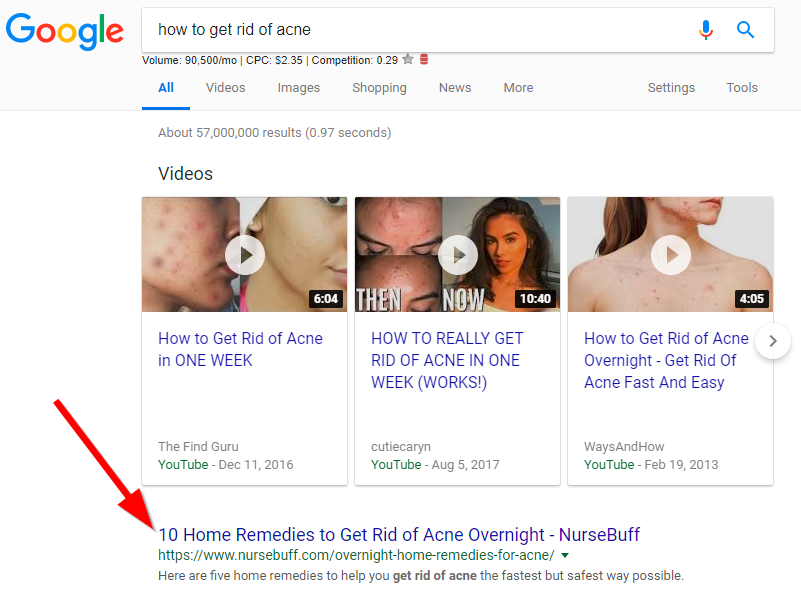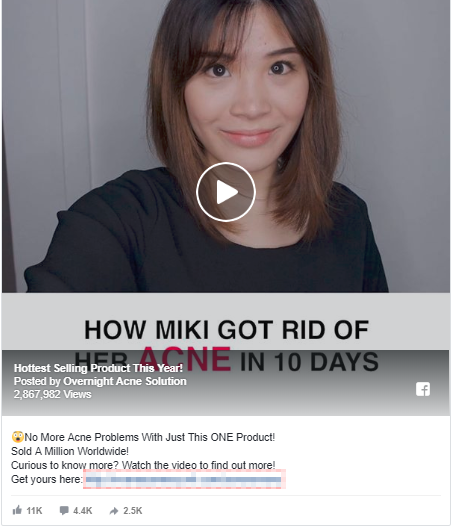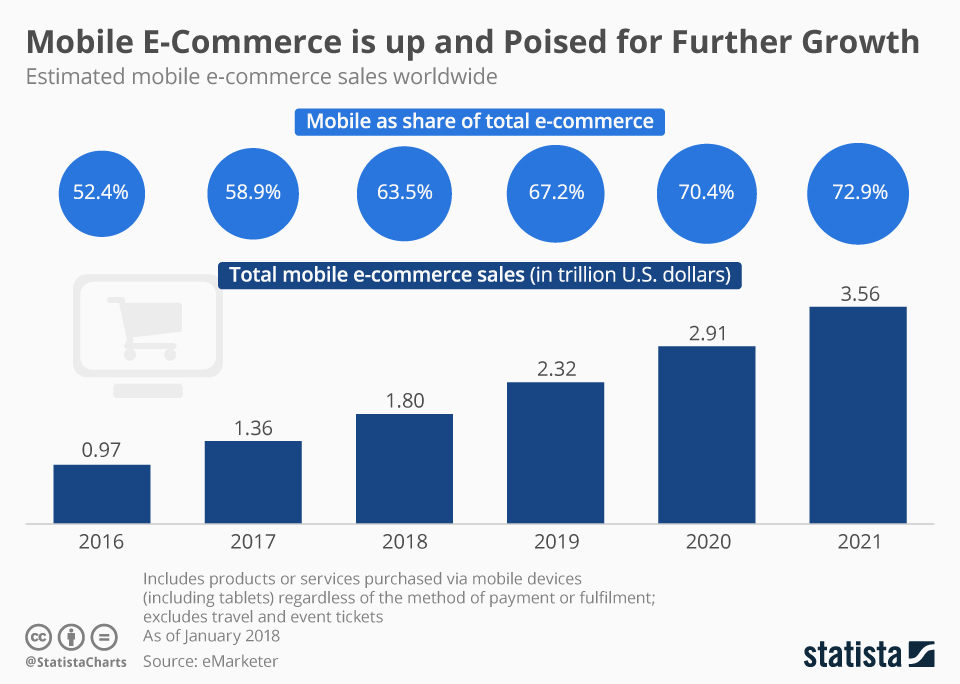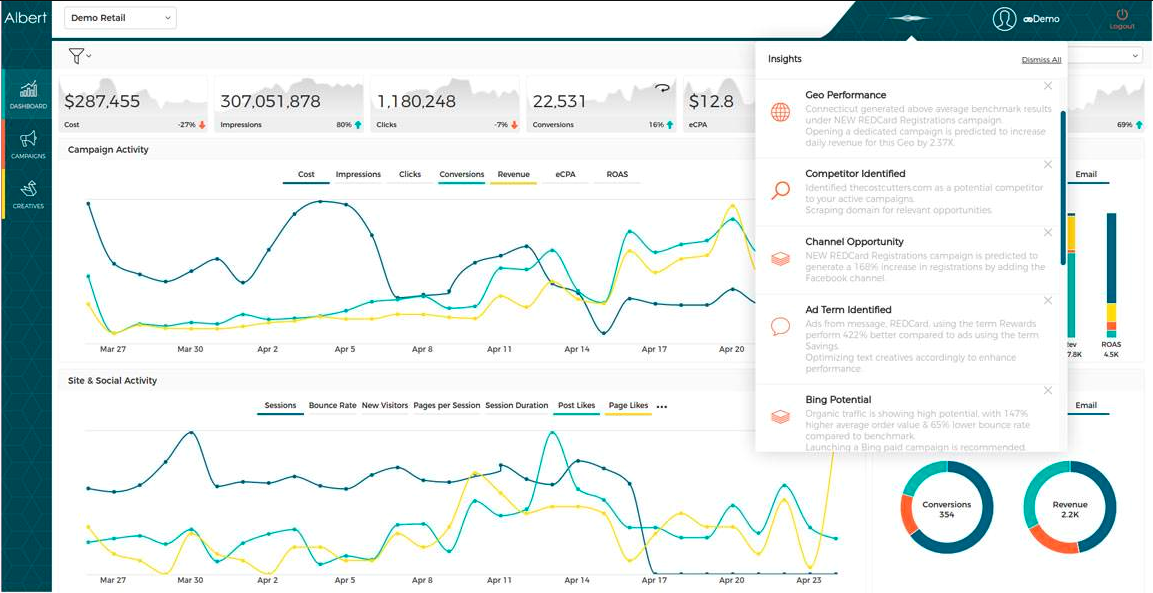Every year, new technology creates bigger and better marketing capabilities.
In 2018, we saw a rise in AI-powered chatbots, innovations in augmented and virtual reality, and more marketing automation.
This year, we have all that, but it's better, faster, and more intelligent. Plus some brand-new innovations not yet seen in the marketing world.
Are you ready for the new year? In today’s guide, I share the seven marketing trends you need to know about in 2019 to stay relevant (and thrive).
Let’s dive in!
%(tableofcontents)
1. Deep, Complex Marketing Funnels
If there’s one thing I’ve learned from working with over 50 different small businesses and ecommerce shops, it’s this:
Most people’s funnels suck.
They either have no idea what their funnel even is (and get squeamish when you mention “Google Analytics goal conversions”), or they understand their funnel but don’t have the skills or experience to improve it.
In 2019, you need to have a full grasp of your marketing funnel — where people are entering, dropping off, and converting — and know how to improve it.
I get it. Marketing funnels used to be simple. You’d run an ad to a landing page or have your content rank for a keyword with purchase intent, and people would convert right then or they wouldn't.
But with improvements in data collection, artificial intelligence, and machine learning, it’s become much more complex and personalized.
Here’s an example of a modern marketing funnel:
-
You've prepared your website: the Facebook retargeting pixel is installed and Google Analytics is configured with goal conversions.
-
Someone searches for ways to get rid of acne on Google, and they land on your site through an organic ranking or an ad. (Notice the video results. I’ll talk more on that later.)
-
They start reading your article or watching your video but get distracted.
-
You run a retargeting ad to get them back to finish consuming your content.
-
This time, they read the whole article/watch the whole video, like what they’re hearing, and sign up for your email list to get more acne info. (Maybe you have a video course series as a content upgrade.) Or they just buy right here and now, if you’re lucky!
-
They get a series of emails (you’ll learn about email AI in section 6 of this guide). Based on which emails they open and which links they click, their email drip feed becomes further personalized. Maybe you find they’re interested in acne removal for teenage women.
-
Your advertising tools automatically increase your ad spend on the 15th because you know that people generally get their second paycheck of the month then and have disposable income.
-
They get their paycheck and finally decide to invest in your acne cream because you’ve earned their trust and spoken to their specific problem.



See how complex — and personalized — funnels are now?
This wouldn’t be possible without advancements in AI and big data, as well as detailed analytics. Complex funnels aren’t necessarily new for 2019, but it’s become easier than ever to implement (and trust me, your competition will be implementing it, if they haven’t already).
Want to learn how to create (and track) better funnels like this for your business? Click the button below to get the resources to do it.
Get The Marketing Funnel Action Plan
2. Mandatory Mobile Website Optimization
Speaking of funnels, one of the most important pieces of your funnel is your website (where the sale is made). And a lot has changed in the world of site design in the last few years.
If you've followed marketing trends for any of the last five years, you’ve heard that mobile optimization is important. That’s still true. In fact, it’s truer now than ever.
Why, you ask?
Because on March 26, 2018, Google began rolling out their mobile-first index. Meaning Google is ranking your site primarily based on your mobile site, NOT on your desktop site.[*]
So until now, if you weren’t mobile-optimized, it really wasn’t a big deal. Sure, it could have hurt your mobile conversions, but Google wouldn’t have changed your rankings. Now, if you’re not mobile-friendly but your competitors are, they can edge you out and lower your search rankings.
But that’s not all. Even more important than that are these stats:
-
From 2016 to 2017, the percentage of visits from mobile devices grew from 57% to 63% in the US.[*]
-
Nearly 60% of online retail sales worldwide came from mobile in 2017. That number is estimated to increase to 72.9% by 2021 (see chart below).[*]

So mobile-friendliness is important. But what does that really mean?
Well, it’s not enough just to be considered mobile-friendly by Google’s mobile-friendly test. You have to actually test your site by making a purchase from your store on your smartphone. It has to feel frictionless and intuitive, or you could be losing a lot of sales.
Want to learn how to make a seamless mobile experience? Click the button below to get my mobile-optimization checklist.
Get My Mobile-Optimization Checklist
3. One-Second Mobile Site Speed
Having a seamless mobile experience doesn’t mean squat if your site loads too slow.
Anthony Chavez, the Product Management Director for Google Ads, claimed that more than half of all smartphone users will not make a purchase if a site takes too long to load. He didn’t give an exact time, but shooting for less than one second to load a page is a good benchmark.[*]
If that wasn’t reason enough to make site speed a priority in 2019, Google put the final nail in the coffin with their speed update which started hurting slow sites rankings as of July 9, 2018. Their update stating, “content that is slow-loading may perform less well for both desktop and mobile searchers.”[*]
They haven’t given an exact load time. But many SEO professionals agree that anything over two seconds can harm your rankings.
That said, two seconds is still a long time for the average impatient mobile user, which is why I recommend setting one second as your benchmark.
Ready to speed up your site? Click the button below to get my site speed checklist.
4. Instagram Ads, Google Ads, and Facebook Ads
So far we’ve discussed the end-location of funnels (your website) and SEO. But ads are, of course, also a major marketing trend in 2019.
Ads are nothing new. But the kinds of ads you can run (and how easy it is to run them) is what’s trending in the new year.
-
Instagram is growing at a crazy rate thanks to Instagram Stories, which allow users to share snippets of video similar to SnapChat. Specifically, monthly active users grew 28.9% in 2017 and 13.1% in 2018. Most importantly, their ads are fairly cheap right now (but are steadily rising) at an average of $0.70 to $0.80 cost per click.[*]
-
Facebook ad spend grew 40 percent year over year in Q2 2018. Ad spend on Instagram grew a massive 177% in the same time period![*]
-
Google AdWords rebranded to Google Ads — it has a more intuitive interface, is easier to use, and leverages machine learning (responsive search ads that let you create an ad that adapts to show more text — and more relevant messages — to your customers) for potentially better conversion rates.[*]

What I’m saying is this:
Instagram is a huge opportunity platform right now, especially for ecommerce stores, which rely heavily on product photos. Google Ads are easier to use now. You have no excuse anymore not to test ads if you’re not already using them.
Want to learn how to get started with PPC advertising? Click the button below to get a quick-start guide.
5. Product Videos, Demo Videos, and Explainer Videos
Another common marketing trend over the last few years has been an increase in video. It makes sense — according to a report by Cisco, video traffic is projected to make up 81% of all internet traffic by 2021, up from 73% in 2016.[*]
That’s massive!
But what made me carve out a spot for video in a 2019 marketing trends article?
Like ads, advancements in video technology have made video easier than ever to get started with. More importantly, some key companies have made major pushes to make video more and more appealing as a marketing channel.
-
Facebook launched its video-on-demand service, Facebook Watch, in August 2017. One year later (August 2018), that service released worldwide, reaching over 50 million people per month in the US alone.[*]
-
YouTube counter-launched their own initiative, upgrading their original Creator Studio (the place where you uploaded, edited, and published video) to YouTube Studio. They essentially made it easier to create and share video with enhanced analytics and personalized recommended resources so you can learn more based on your specific channel’s needs.[*]
-
More and more Google search results display video (like my search for “how to get rid of acne” in trend #1), meaning video is SEO friendly.[*]
All this and I haven’t even mentioned virtual reality and the push effect that’s having on video marketing. But we’re not quite there yet with VR, so I’ll save that (perhaps for 2020 marketing trends?).
So how do you implement video marketing in your marketing mix?
Video marketing doesn’t have to be daily, weekly, or even monthly videos. It can be as simple as product videos, demos, or explainer videos. In fact, those three kinds of videos are the most common that businesses had created by late 2017 (see below).[*]

Ready to add videos to your marketing strategy? Click the button below.
Get My Video Marketing Quick-Start Guide
6. Email Marketing Personalization and AI
Email marketing has been a cornerstone of online marketing trends since email became popular in the '90s. And yet, it’s still one of the highest ROI channels in existence with a potential of 3,800% ROI ($38 back for every $1 spent)![*]
So what’s new in email marketing in 2019?
As you saw in my complex marketing funnel example earlier, you can and should be sending highly personalized emails to your list based on the emails they open (or don’t open), the products they buy, and the links they click within your emails, among other things.
This has been possible for a while now, but new AI solutions like Albert exist, allowing you to A/B test, personalize, and go multi-channel using software. (Albert is a digital marketing AI that automates things like audience targeting, budgeting, testing/optimizing ads, and more.)
You don’t have to worry about this stuff as much anymore — computers can do it better and faster than we can.

AI and machine learning are still in their infancy, but they’re finally starting to become practical (and affordable) for small business owners like you and me.
Ready to dive into next-century email marketing to grow your business? Click the button below to get my email marketing 2019 quick-start guide.
Get My Email Marketing Quick-Start Guide
7. Content Pillar Pages and Clusters
To end our 2019 marketing trends, I leave you with my absolute favorite marketing method: content marketing.
Content marketing is amazing! It’s responsible for hundreds of thousands of monthly visits to my own blogs, tens of thousands of dollars of revenue for my clients, and more. It has the potential to build brand loyalty unlike any marketing strategy I’ve ever tried — because to be successful with content, you HAVE to be genuine and provide loads of value.
In fact, I’d implore you to forget about content marketing as a “marketing strategy.” Content marketing is simply marketing at this point. It’s integral to any great marketing mix, and can be used in nearly any other marketing strategy, from PPC to email, social media, or even in-person events.
But enough of my prattling about its effectiveness. Why is higher-quality content a 2019 marketing trend?
Aside from the ever-increasing levels of competition (there are more than 2.5 million blog posts published every single day on WordPress alone), you have companies like Google and Facebook pressing for stronger content.[*]
Here’s what I mean:
-
Since Google launched their Panda update in 2011 (the one that penalized low-quality content), they’ve been refining their algorithm to further raise the bar for content quality.
-
In December 2017, Facebook started fighting “clickbait” posts that led to low-quality content. In 2018, Zuckerberg furthered this high-quality initiative, saying, “One of our big focus areas for 2018 is making sure the time we all spend on Facebook is time well spent.”[*]
The August 2018 Google update seems to further this idea. While no one knows for sure the exact factors that this update influenced, there’s a correlation between low-quality content and a loss in search rankings.[*]
Specifically, they announced on Twitter that there’s “no fix” for rankings loss other than by “building great content”.
There’s no “fix” for pages that may perform less well other than to remain focused on building great content. Over time, it may be that your content may rise relative to other pages.
— Google SearchLiaison (@searchliaison) March 12, 2018
So not only will higher-quality content help you show up on Google, it will also help your posts show up (and get more engagement) on social media sites like Facebook.
To comply, one thing you can do is create “pillar pages”. These are pages on your site — typically in-depth articles (2,000 words or more) that cover everything someone needs to know on a particular topic.
In addition to this, you can leverage a tactic I call “content clustering”, where you create a series of articles related to the topic of your pillar page.
For example, I created a pillar page on the topic of RV rental companies for our travel blog, shown below.[*]

This page reached the #1 position on Google for it’s target keyword (RV rental companies) within just one month of being published.
There are a lot of reasons for this — my site’s brand authority, topical relevance, and technical SEO — but there are two main reasons:
-
I created a cluster of sub-pages covering related content, such as “best RV rentals in Las Vegas”, that internally linked back to my pilar page.[*]
-
The article uses all the content writing best practices I’ve learned in 6+ years of writing and SEO, including short sentences/paragraphs, lots of images, research-based stats, screenshots, and more.
Want to learn how to create the highest-possible-quality content you can? Click the button below to get my content quality optimizer checklist.
Get My Content Quality Optimization Checklist
A Free 2019 Marketing Trends Implementation Guide
You now know the seven things to focus on in the new year to make your marketing stand out and grow your business.
But do you know how to actually implement these tactics? If not, click the button below to get my 2019 marketing trends implementation guide, with checklists and additional resources to learn the action steps you need to take advantage of these trends.
Get My Marketing Trends Implementation Guide
Innovation is key. Without it, your business will die.
Add A Comment
VIEW THE COMMENTS